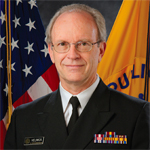A: Statistics and epidemiology are actually closely inter-related. Epidemiology is the study of populations. Summarizing data from populations is a key part of a statistician’s role. I became involved in epidemiology because of the Rochester Epidemiology Project here, which is a wonderful and unique resource that allows us to combine data from Mayo Clinic and other medical providers to study diseases among the residents of Olmsted County, Minn.
Q: If you could change one thing about the field of rheumatology, what would it be?
A: I would like to see more statisticians involved in rheumatic disease research. Research studies are becoming increasingly complex, and researchers who perform their own statistical analyses are not always aware of the latest statistical techniques to allow them to perform the optimal analyses of their research data.
Q: If you could change one thing about the field of statistics, what would it be?
A: Statisticians involved in medical research should not constrain themselves to providing the service of ‘crunching the numbers’ with limited understanding of the disease they are studying. I believe involvement in the entire research process from study conception to completion is essential. Having a deep understanding of the disease will help the statistician advance the field they work in and enable them to contribute to development of important research questions as well as better analyses that provide more meaningful results for clinicians and patients.
ARHP President’s Award
 Charles “Chad” Helmick, MD
Charles “Chad” Helmick, MD
Medical Epidemiologist, Arthritis Program, Centers for Disease Control & Prevention (CDC), Atlanta
Background: A career spent in public health service has taught Dr. Helmick that no one does it alone. “We in public health are motivated by the importance of our work, but don’t expect much recognition,” he says. “When it occurs … it is unexpected and, therefore, extra satisfying. Plus, it reflects on the group effort that comprises public health, not just on me or a single person.”
Not to say that Dr. Helmick hasn’t earned the honor. He joined the CDC’s Epidemic Intelligence Service (EIS) training program in 1979. He’s spent many years since promoting the “collaboration between medicine and public health … to make sure the good things that we know can help people with rheumatic diseases are easily available to them.”
‘We in public health are motivated by the importance of our work, but don’t expect much recognition.’ —Dr. Helmick
Q: Your career started with EIS. Basically, you wanted to be a disease detective. What about that thrill of the hunt appealed to you then?



